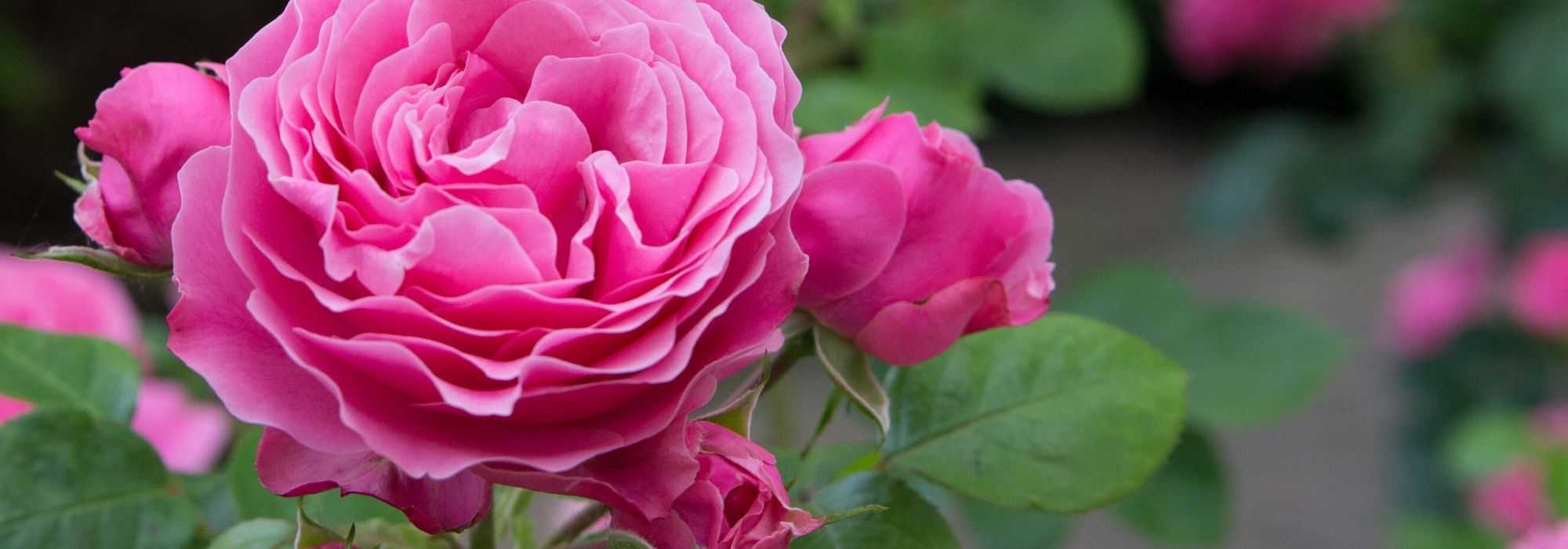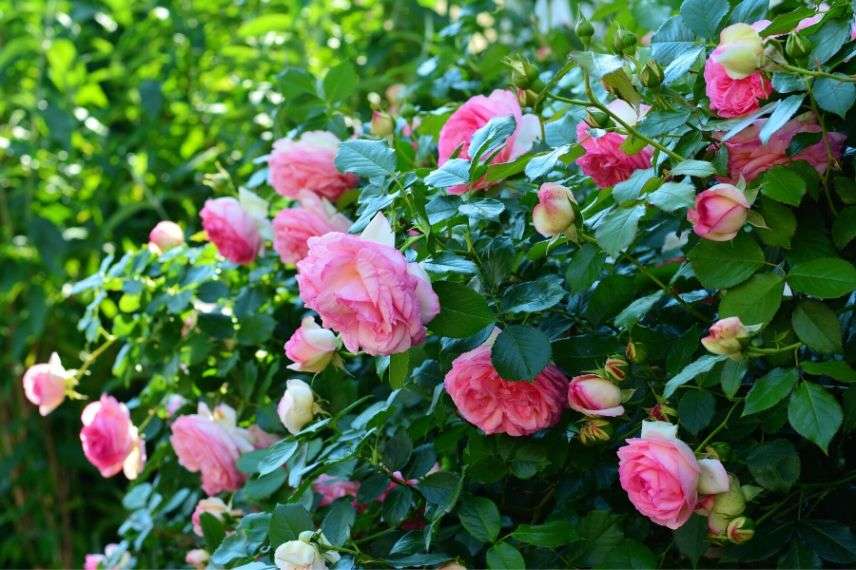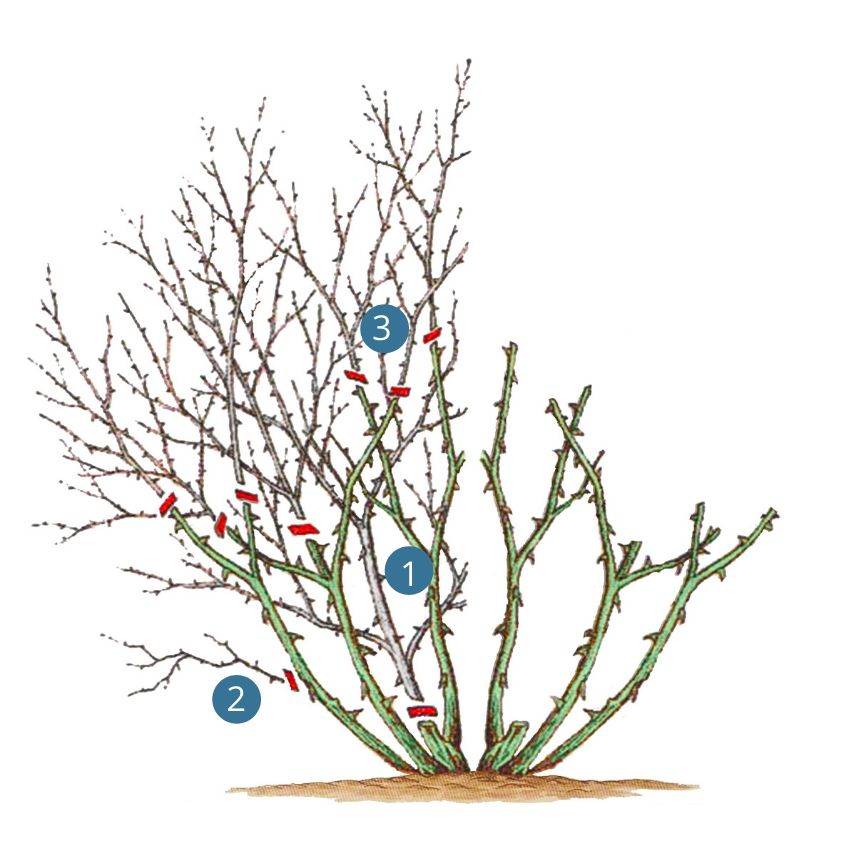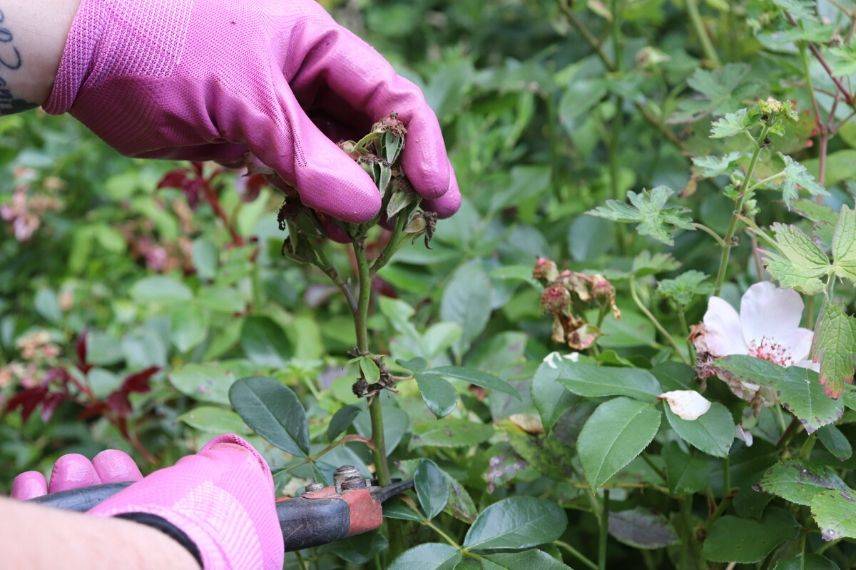
When and how to prune repeat flowering roses?
techniques and tips
Contents
Pruning repeat flowering roses is an essential action to maintain a balanced shape, keep them healthy, and ensure abundant flowering.
Discover our tips on when and how to prune repeat flowering roses!
What is a repeat flowering rose?
A repeat flowering rose is a rose that blooms from June until the frost! This is often the case with so-called modern roses. This can therefore apply to all types of roses: bush, shrub, groundcover, climbing, landscape, standard, or weeping.
To learn more about repeat flowering roses, check our advice sheet: “What is a repeat flowering rose?“

Read also
What is a perpetual rose?When to prune repeat flowering roses?
Repeat flowering roses are pruned in three stages, namely:
- at the end of winter or the beginning of spring depending on your climate, this is the main pruning;
- in autumn, a light pruning of roses also helps to reduce the workload in spring;
- in summer, it is important to regularly remove faded flowers to encourage the production of new floriferous shoots.
How to prune repeat flowering roses?
Here’s how to carry out the main pruning of repeat flowering roses:
- remove dead or damaged wood;
- cut back crossing stems and twigs that will not produce anything and check that your rose has not formed any suckers. Keep between 3 and 5 branches, a few more for roses with small flowers;
- for the actual pruning, there are several methods: severe pruning is only recommended when you want to encourage your ageing rose to produce new shoots, and only every 3 to 4 years. I believe a moderate pruning is preferable. For this: either remove 1/3 or even half of each branch depending on the vigour of the rose while ensuring a balanced habit; or prune to 2 or 3 eyes on the weaker shoots and to 5 or 6 eyes on the stronger shoots. Cut at an angle 0.5 cm above an eye facing outward;

Finally, feel free to consult our advice sheet on pruning roses.
How to prune a rose after flowering?
It is important to prune roses for a new flowering. For this, nothing could be simpler: cut at an angle, just above the first or second well-formed leaf (5 leaflets or more), located below each single flower or group of flowers.

Gardener's Questions
What is the difference between climbing and repeat flowering roses?
A repeat flowering rose blooms several times, in successive waves from June until the frosts. A climbing rose is one that will produce long stems, allowing it to be trained on a support. Of course, a rose can be repeat flowering but not necessarily climbing, or it can be climbing and not repeat flowering, or even climbing AND repeat flowering, meaning it grows upwards and will bloom throughout the summer.
When to plant a repeat flowering rose?
To plant a rose correctly, consult our advice sheet: Roses: how to plant them?
- Subscribe!
- Contents
































Comments